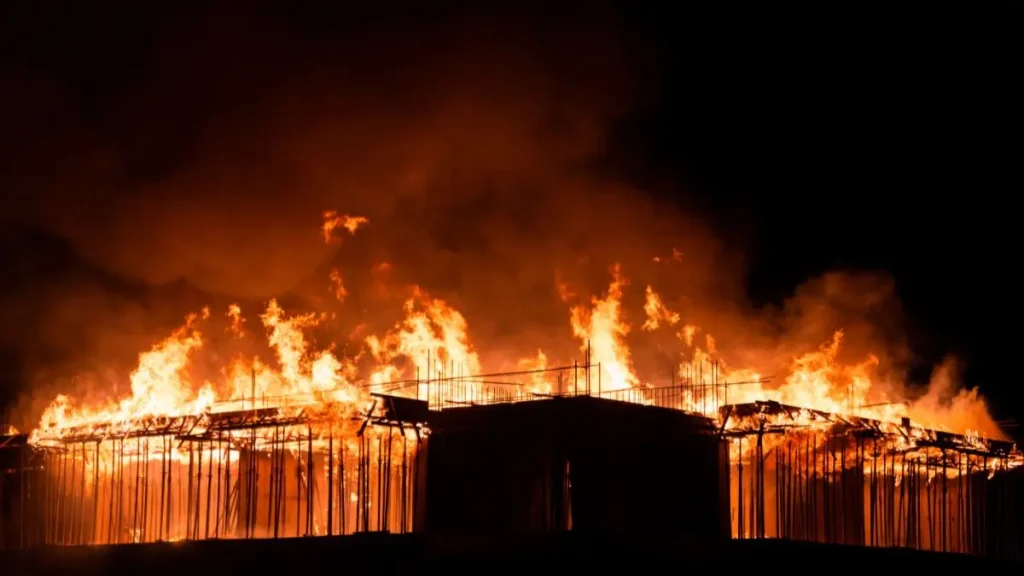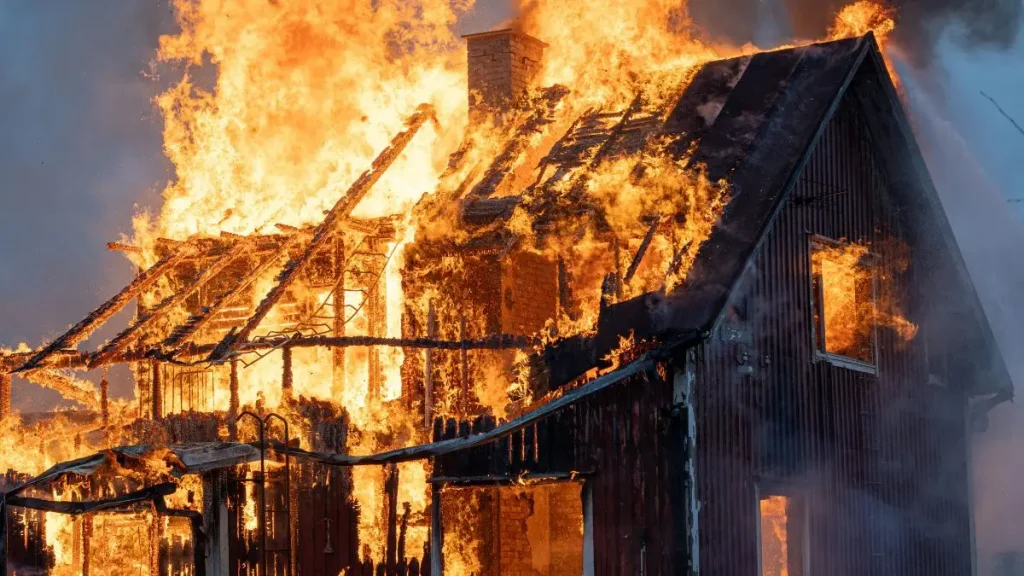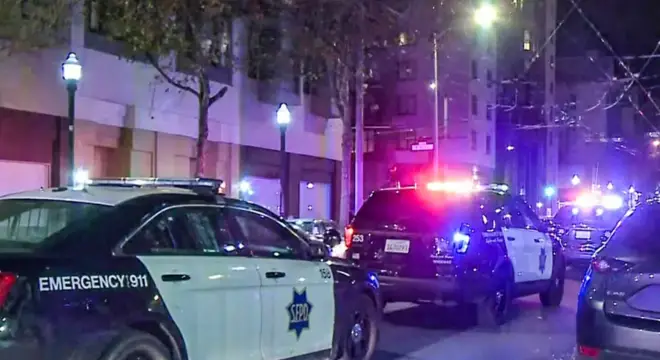Missouri Vacant Home Catches Fire Overnight No Injuries Reported
It was around 3 a.m. when the quiet of South St. Louis’ Bevo neighborhood broke. A vacant house on Ellenwood went up in flames—again. I say “again” because, according to nearby residents, this isn’t the first time that house has caught fire.
Six to eight months ago, same story. This time, it was a trash pile that reportedly ignited and spread fast—too fast for anyone to do anything but call 911.
When firefighters arrived, they found flames tearing through the basement and the first floor. No one was hurt, thankfully. But this wasn’t just some random blaze. It’s the kind of fire that makes you stop and think—how does a house sit empty, catch fire twice, and still pose a threat to the people living just next door?
As someone who’s written about dozens of these cases, let me tell you—this isn’t rare in Missouri. What feels like “just another vacant house fire” is often a warning sign of something bigger. Lax oversight. Illegal dumping. Squatters. And sometimes, just plain neglect.
Have you seen something like this happen in your neighborhood too? Let’s talk about it in the comments.
What Really Happened at 3 AM on Ellenwood?
When I first came across this story, I wanted to know exactly when and where this happened—and I’m sure you did too. According to the St. Louis Fire Department, and as reported by FOX 2 News, the fire broke out around 3 a.m. on the 4200 block of Ellenwood Avenue, right in the heart of Bevo neighborhood in South St. Louis.
By the time fire crews reached the scene, flames were already moving aggressively through the basement and first floor of a house that was supposed to be empty. It was a massive fire—but thankfully, it didn’t spread to homes nearby.
I bring this up because for you, a reader living nearby or following local safety updates, timing and response are everything. This was no small fire—and that matters.
Trash Fire or Something More? Where the Flames Began

Let me tell you what stood out to me. The first call to 911 didn’t say “house on fire.” Instead, it said a trash pile had caught fire. That fire, in minutes, had jumped from the pile to the vacant structure.
Now, if you’re wondering, How can a pile of trash burn down a whole house?—you’re not alone. It’s likely that dry debris, wind, and structural neglect all played a role.
It’s not confirmed yet, but the idea that trash caused this makes you think about how dangerous illegal dumping really is in neighborhoods like this.
You and I both know, trash doesn’t just look ugly—it can spark the kind of chaos that wakes people up at 3 a.m. That’s a real community hazard.
We’ve seen similar “ignition from debris” cases elsewhere—like the Lakeland fire where investigators also suspected outdoor trash as the origin.
Repeat Incident: Same House Caught Fire Just Months Ago
Here’s the part that shocked me—and probably will get to you too. This isn’t the first time this house has gone up in flames. Neighbors say there was a fire 6 to 8 months ago at the exact same spot.
Now ask yourself: Why wasn’t anything done after the first fire? Why was this place still left unsecured and vulnerable to danger?
I’m pointing this out because you deserve to know the whole story, not just the incident.
Have you ever reported a property like this in your neighborhood but seen no follow-up? Or witnessed repeat incidents like this one? Drop your thoughts in the comments—I want to hear what you’ve seen.
Were Squatters Living There? Neighbors Think So
As I dug deeper, I found something even more troubling. Local residents believe squatters had been staying in that vacant house. Now, to be clear—no official statement confirms this. But neighbors said they had seen people going in and out regularly.
And that raises a serious question for you and for me: Was this fire accidental—or something that could’ve been prevented with better security or city oversight?
If squatters were indeed inside, the risk wasn’t just to the house—it was to human lives. You live next to a house like that? Then you know this isn’t just a “vacant home fire”—it’s a safety ticking time bomb.
Lately, I’ve seen more and more local fire alerts, suspicious activity reports, and community safety posts being shared early via WhatsApp channels before even news sites pick them up. If you’re into real-time local updates, it might be worth joining one.
Fire Crews Stopped It from Spreading. Here’s How
Let’s give credit where it’s due. Firefighters showed up fast, and despite the intensity of the fire, they stopped it from spreading to nearby occupied homes.
From what I’ve read and heard, their quick action turned a potential neighborhood-wide disaster into a contained situation. That’s no small feat, especially when you’re dealing with vacant structures that can collapse or fuel flames unpredictably.
And you, reading this—whether you’re a resident of Bevo or just following these events—you should know this isn’t always the outcome.
In other cities, we’ve seen vacant house fires bring down entire blocks. It didn’t happen here—and that’s thanks to trained, alert first responders.
Similar quick response prevented larger damage in a recent Millington house fire, where fire crews managed to contain flames before nearby properties were affected.
Why Vacant Homes Like This Are a Real Danger for Everyone?

As someone who’s covered multiple fire incidents, let me tell you—vacant homes aren’t harmless. You may walk by them every day and think, “It’s just an empty house.” But in reality, they’re often fire hazards just waiting to happen.
In cities across Missouri—including right here in St. Louis—vacant properties catch fire way more often than you’d expect. In Kansas City alone, firefighters respond to over 200 vacant structure fires every year. Imagine that.
Now think about your neighborhood. Is there a property like this near you? Then this isn’t just a news story—it’s a real, personal safety concern. And trust me, as we’ve just seen, it doesn’t take much more than a trash pile to set things off.
Whether it ends up being trash-related or something deeper like a wiring fault—like we saw in the Pensacola case—we’ll only know once the full investigation is in.
What You Can Do If You Live Near a Vacant Home?
Look, I get it—you’re just trying to keep your own home safe. But if there’s a vacant house next door or nearby, your safety is linked to how that property is managed.
So here’s what I’d suggest (and what experts recommend too):
- Report illegal dumping right away—it’s often the trigger.
- Call the city to request inspection or cleanup.
- Keep your exterior lights on—it deters trespassers.
- If you notice smoke or suspicious behavior, call 911 immediately.
This isn’t just about being a good neighbor. It’s about protecting your own family. These homes may be vacant, but the risk is very real—and very active.
What Happens Next? We Wait for Answers—and Action
At the time I’m writing this, the official cause of the fire hasn’t been confirmed. Investigators are still working to figure out whether it was just the trash pile—or something more intentional. The involvement of squatters raises even more questions.
For now, all we can do is watch and wait. But here’s what you and I should be looking for:
- Will the city finally secure or demolish the house?
- Will an arson probe be launched if foul play is suspected?
- Will this event push stronger action on vacant homes across St. Louis?
These aren’t just follow-up questions—they’re community safety checkpoints. Because if nothing changes, we already know what could happen again.
Final Thoughts
If you’ve read this far, you already understand—this wasn’t just a late-night blaze in an empty house. It was a warning. Vacant homes, illegal dumping, and ignored complaints create a perfect storm that can hurt real people living next door.
You and I both deserve better from the systems meant to keep us safe. But until that changes, staying alert, informed, and vocal is the best protection we’ve got.
Stories like this aren’t isolated—and sadly, we’ve covered several just like it across the U.S. If you care about fire safety, prevention, and how your city handles emergency response, check out more updates on our website Build Like New.
Disclaimer: This article is based on publicly available news reports, neighborhood statements, and official fire department updates as of the date of writing. Details may change as the investigation develops. Always refer to local authorities for the most current and verified information.
⭐ Subscribe to Our Newsletter
Subscribe to the publishers newsletter to receive the latest news and updates directly in your inbox


